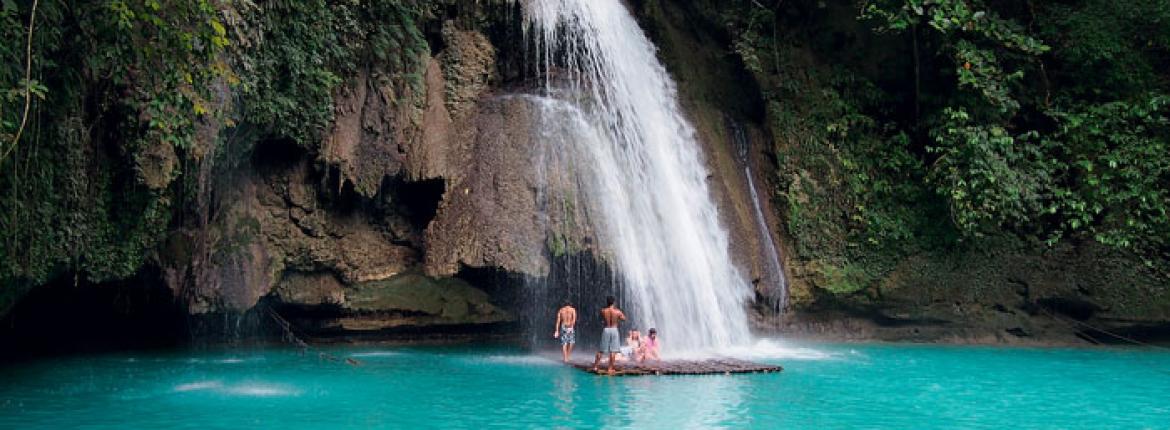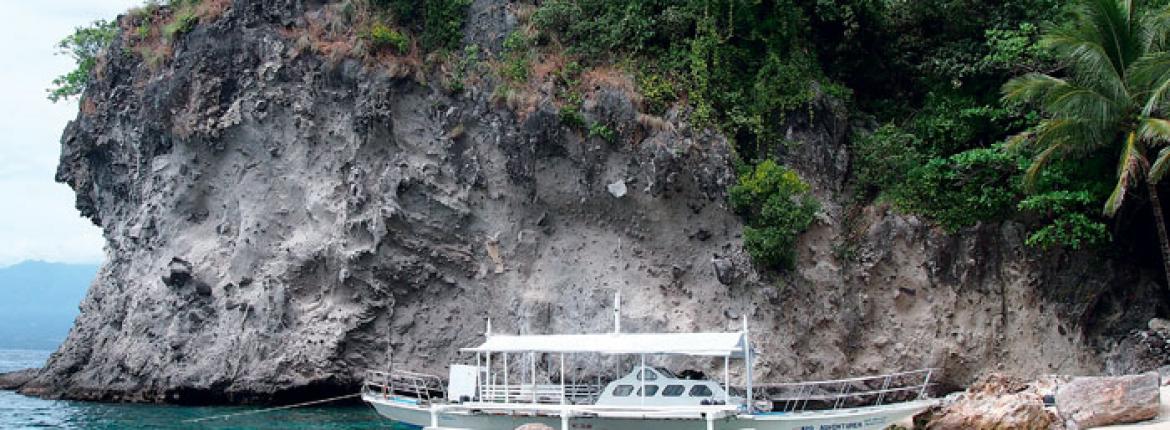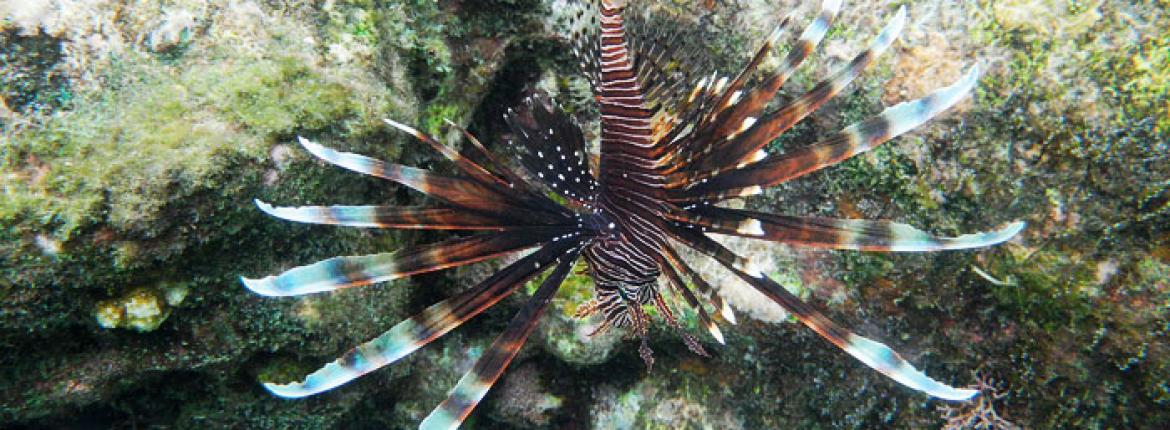Philippines road users obey one rule above all else: little gives way to big. As I hurtle along in the back of a taxi, coconut palms and thatched hut rooves flashing past, the logic of the honking, swerving driver becomes clear. We’re on a narrow road winding across Cebu Island from the metropolis of Cebu city to the quaint seaside spot, Panagsama Beach. Pedestrians scuttle to the roadside and motorbikes laden with passengers hug the curb, as we toot past.
I occupy myself counting the number of people riding on one motorbike. Five adults is quite normal. All sans helmet. We zip past another bike carrying only two men, but the passenger is cradling an enormous chainsaw on his knee. I shudder to think what would happen in a collision.
Motorcycles are the most popular way to get around in the Philippines, and are even used as a form of public transportation known as habal-habal. With a few minor adaptations, one motorbike can carry as many as 13 people. Habal-habal is particularly useful in remote jungle areas which are inaccessible to jeepneys, another ingenious innovation.
Adapted from US military jeeps the Americans left behind after World War II, the jeepneys have paint jobs to rival New York ‘80s subway graffiti and inject a shock of colour to the shabby streets, as they ferry people around in their crowded rear compartments. The taxi’s back seat feels palatial in comparison. It may sound extravagant to be travelling long distance by taxi but, after the two-hour journey the metre reads $100. When travelling in the Philippines, it’s affordable to do things in style.
The Philippines is a land of extremes. An archipelago of 7,000 islands which is home to nearly 100 million people, it's populated in a way that reminds me of the chaos of India. The heaving presence of humanity is everywhere you look. And yet, this tropical getaway also offers moments of utter serenity.
After the hectic drive across the island, I check into a waterfront room on Panagsama Beach, with views across the Visayan Sea. This spot draws tourists for its superb reef diving. Boutique hotels, restaurants, bars and several dive shops cluster along a dirt road. There is a relaxed backpacker vibe, and the nightlife is lively – when local San Miguel beers cost $1.50, it’s tempting to cool off with a few at the end of a hot day at one of the open-air bars.
Another option is a refreshing dip. With the ocean at the back door, all I have to do is kick off my jandals, slip on a mask and snorkel, and launch into the tepid waters. I’m immediately greeted by stripy tropical fish dressed in cartoon-like colours. Even the starfish have exaggerated long arms, and nature’s painted them an unlikely Yves Klein blue.
The next day I get acquainted with even more fantastical marine life – spiky lionfish, stonefish perfectly camouflaged against the mottled coral and lumpy prehistoric frogfish. It’s obvious why the Philippines is rated as having some of the best diving spots in the world.
The language of business in the Philippines is English, which makes the basics like booking dive trips, reading menus and buying ferry tickets a breeze. But nothing enhances a travel experience like a bit of local knowledge, so it’s good to have the guidance of Ben Carter and Levi Wulf of Auckland-based Philippines Adventure Tours, who run island-hopping tours to the Central Visayas.
After a few days spent seaside, we head inland. I sling myself on the back of a motorbike for the trip from Panagsama Beach to Kawasan Falls. It’s exhilarating feeling the warm, coconut-scented air wooshing past and we cautiously pull aside when vans and buses bear down on us. Driving gets hairiest near the village arena where the road is clogged with people arriving for the Saturday afternoon cockfight. We park the motorbikes at the gate to the falls and walk uphill for 20 minutes until we reach a glimmering turquoise swimming hole beneath cascading falls. It’s ridiculously close to paradise.
Next stop on the tour is Dumaguete on the island of Negros. Taxis are not permitted in the historic centre of this university town, so the roads are clogged with motorcycles fitted with sidecars. Again, we escape the chaos by setting out for sea. Nearby Apo Island has a community-run marine sanctuary, which was set up in the 1980s to protect against overfishing and has become a model for other conservation projects throughout the Philippines. A landing fee of 100 pesos ($3) goes towards the sanctuary. The reserve is now home to more than 650 fish species and 400 coral species, and the tourism dollar supports the 700 villagers on the island.
The diving here is world-class, but it’s not necessary to strap on an air tank to marvel at the underwater wonderland. Just a few steps from the shore, I snorkelled with two green sea turtles grazing on seagrass.
Accommodation on Apo Island ranges from rooms in traditional huts made from woven palms to luxury bungalows at the Apo Island Beach Resort, tucked in a private cove that is accessible only by boat or walking through a narrow rock cutting. Stepping through that cliff has a way of making the world’s worries dissolve. I meet a German couple so enamoured with the place they’ve been coming here annually for seven years, and I understand their obsession.
My exploration of the Central Visayas ends with a couple of days at Alona Beach on Panglao Island. This is the most developed of the tourist spots we visit. It’s famed for its clear waters and, again, spectacular snorkelling and diving is the main attraction. The small island to the south-east of larger Bohol Island feels more like the resort areas of Thailand, with a string of outdoor restaurants along the beach, massages on the sand at sunset, and hawkers with armfuls of cheap sunglasses and pearls.
A local divemaster I spoke to had concerns about the mega hotels being built up the road to accommodate the booming industry. That will please the Government, currently on a tourism push to boost the economy. While parts of the Philippines are heading in the direction of its popular south-east Asian neighbours, with brochure packages to suit holidaymakers seeking relaxation and rejuvenation, the more intrepid visitor has hundreds, if not thousands of islands to discover.
They can expect a warm, if somewhat haphazard welcome.
Reported by Frances Morton for our AA Directions Summer 2013 issue






